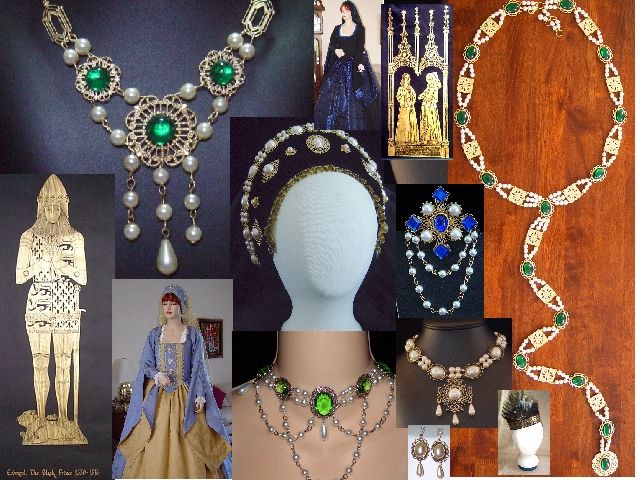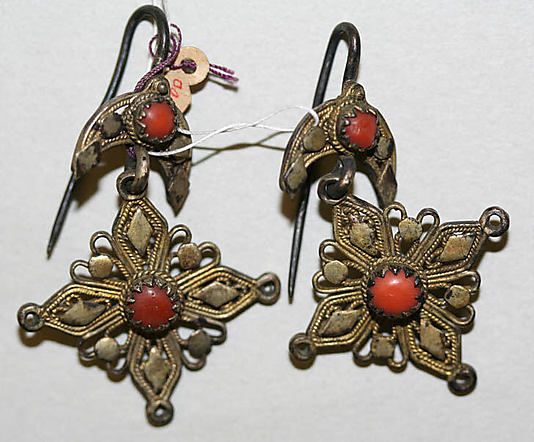Earrings have been a cherished form of personal adornment for millennia, gracing the ears of men, women, and even children across cultures and civilizations. From ancient talismans and symbols of status to modern fashion statements, earrings have consistently evolved, reflecting the values, aesthetics, and technologies of their time. This article will take you on a journey through the history of earrings, exploring their significance and transformations across different eras.

When were earrings invented? Earrings have adorned ears for millennia, with their earliest origins traced back to ancient civilizations like the Sumerians and Egyptians. These adornments held significance beyond mere aesthetics, often serving as talismans, status symbols, or expressions of cultural identity. In ancient Sumer, gold hoop earrings were discovered in royal tombs, signifying wealth and power. The elite wore these hoops, while common folk adorned themselves with earrings made from shells, stones, and even bones. These early earrings often featured intricate designs and were believed to possess protective powers.
The ancient Egyptians origin of earrings took this jewelry to new heights, crafting elaborate designs with precious metals, gemstones, and symbols associated with their deities. Earrings were worn by both men and women, often as part of intricate jewelry ensembles. They believed earrings could ward off evil spirits and bring good fortune.
Across the ancient world, earrings held diverse meanings and symbolism. In Persia, they were worn by soldiers as talismans of protection in battle. Greeks and Romans adorned themselves with earrings featuring animals, mythological creatures, and geometric patterns, showcasing artistic skills and cultural beliefs.

Now that we know who invented earrings and its early history, let us move a lit forward in time. During the Middle Ages in Europe, earrings experienced a decline in popularity. The influence of the Church, which discouraged altering the body, led to a decrease in their use. However, they persisted in other cultures, particularly in the Byzantine Empire and the Middle East, where they retained their cultural and aesthetic significance.
With the advent of the Renaissance, earrings saw a resurgence in Europe. The renewed interest in personal adornment, inspired by classical ideals of beauty and elegance, led to a revival of earring fashion. Elaborate designs featuring pearls, diamonds, and other precious stones became sought-after accessories among the wealthy and nobility. Earrings were often integrated into larger jewelry ensembles, complementing necklaces, brooches, and pendants. While elaborate designs were favored by the upper class, simpler styles like pearl drops or small gold hoops were also worn by people of different social standings. The Renaissance marked a turning point in the history of earrings, paving the way for their continued popularity in the centuries to come.

Earrings in the 18th to 19th period were a testament to the era's evolving fashion trends and cultural shifts. Drop earrings, chandeliers, and girandoles became incredibly popular, showcasing elaborate designs with dangling elements. These earrings often incorporated intricate metalwork, sparkling gemstones, and even colorful enamel accents. The rise of the middle class during the Industrial Revolution fueled a demand for more affordable jewelry, leading to the use of less expensive materials like paste (glass imitating gemstones) and pinchbeck (a copper and zinc alloy resembling gold). This democratization of jewelry allowed a wider range of people to adorn themselves with fashionable earrings.
While women predominantly wore earrings, certain regions and social circles saw men embracing them as well. Men's earrings ranged from simple studs to more elaborate designs, often holding symbolic or cultural significance. The late Victorian era (late 19th century) marked a shift in earring fashion, as ear piercing fell out of favor. This led to the popularity of clip-on earrings, providing a non-invasive option for those who didn't have pierced ears.
Overall, the 18th and 19th centuries were a time of immense creativity and experimentation in earring design, reflecting the changing tastes and aspirations of society. The diverse styles and materials used in earrings during this period continue to inspire contemporary jewelry designers today.

The 20th century earrings origin brought about a significant democratization of earrings, as mass production and changing social norms made them accessible to a wider audience. Mass production and changing social norms made earrings available to a broader audience, while the introduction of clip-on earrings catered to those without pierced ears. The early 20th century saw a continuation of Art Nouveau and Art Deco influences, with intricate designs and geometric shapes. However, as the century progressed, styles diversified, reflecting the artistic and cultural movements of the time.
The mid-century saw the rise of the iconic "stud" earring, a simple yet elegant design that quickly became a staple for both men and women. The countercultural movements of the 1960s and 1970s brought about a wave of experimentation, with earrings becoming more expressive and unconventional. Materials like feathers, beads, and even safety pins found their way into earring designs. The latter part of the century saw a resurgence of classic styles, with pearls, diamonds, and gold remaining popular choices. However, the diversity of options continued to grow, with earrings becoming an essential accessory for expressing individuality and personal style.
Starting from the first earrings in history, the 21st century has witnessed a dazzling explosion of earring styles, reflecting a globalized and diverse fashion landscape. Minimalism, characterized by delicate studs and geometric shapes, coexists with bold statement earrings that embrace maximalism, asymmetry, and unconventional materials.
Ear cuffs, a contemporary innovation, offer a non-piercing alternative that hugs the ear's curves. Personalization and self-expression are paramount. Customizable earrings allow wearers to create unique combinations of charms, gemstones, and initials. Social media platforms have become virtual runways, showcasing diverse earring trends from around the world and amplifying the voices of independent designers.
Sustainability and ethical practices have also entered the earring conversation, with a growing demand for recycled metals, ethically-sourced gemstones, and fair-trade production. 3D printing technology has opened up new possibilities for intricate designs and custom-fit pieces. In this dynamic era, earrings remain a powerful form of self-expression, constantly evolving to mirror the spirit of the times.

The history of earrings is a fascinating journey that spans centuries and continents. From ancient symbols of power and protection to modern fashion statements, earrings have consistently held cultural and personal significance. As fashion trends continue to evolve, it's clear that earrings will remain an enduring form of self-expression and adornment for generations to come.
Earrings symbolize various things depending on culture and context, such as wealth, status, beauty, identity, cultural heritage, and personal expression.
The purpose of wearing earrings varies across cultures and individuals. Generally, earrings serve aesthetic, cultural, and personal expression purposes. They can signify social status, cultural identity, and adornment, while also complementing one's overall style and fashion sense.
Yes, men historically wore earrings in various ancient civilizations and during certain periods of history, often as symbols of status, wealth, or cultural significance.
Know the answer to “does titanium rust?” question along with its exceptional corrosion resistance. Get to know more about titanium's properties.
Read MoreExplore titanium rings pros and cons to decide if they're the right choice for you. Read our full analysis, along with essential maintenance tips.
Read MoreLearn how to clean titanium ring effectively, from general methods to caring for ones with stones and color. Get tips to polish and maintain its shine.
Read MoreCan titanium rings be resized? Get answer to this question and explore alternative options for adjusting the size of your titanium ring to ensure a perfect fit.
Read More